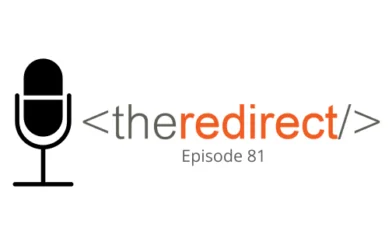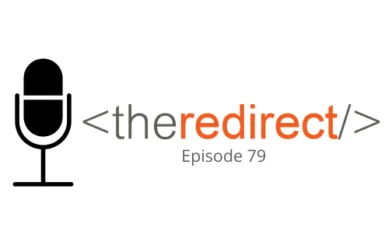Episode 13 / August 18, 2017
Listen Now:
In Episode 13 of The Redirect Podcast, we discuss:
- Spammers using Google My Business in a predatory manner to get money from business owners
- How the EC antitrust ruling against Google might affect businesses buying Google Shopping ads
- PDF optimization for search, and whether you should focus attention there
- Tips for getting your site secure with HTTPS
- Are Google Home and Amazon Echo the new home phone?
- How to break down departmental silos for great content marketing
Spammers Claim to Help with Google My Business
Spammers are using Google My Business as a ploy to target business owners by phone. Jason shares his personal experience with multiple attempts made by a so-called Google My Business “authorized professional.” These individuals are calling local businesses stating their GMB is not claimed and could be costing them traffic and business. We call BS and even back that up with statements from Google, who have stated they do not call businesses for these reasons.
Those working on their local SEO citation sources should take note of these tactics, and you actually can report them.
Google Shopping Ads and the Antitrust Ruling
How important is Google Shopping for retailers? More important than ever, according to the article at Search Engine Land. But the European Commission has made an antitrust ruling against Google for unfair practices with the placement of product listing ads (PLAs) essentially hurting the little guy and boosting the big guy. If not appealed by Google, this ruling could directly affect many businesses who have become more and more dependent on the revenue streams coming from Google Shopping ads. The article mentions that PLAs have accounted for a 14% share of all site orders for median U.S. retailers in 2017, vs. 5% in 2014.
Optimizing PDFs for Search
An article from Search Engine Journal (10 Tips to Make Your PDFs SEO Friendly) sparked discussion on whether a PDF is the best way to deliver information to users. PDF is often used for downloadable guides, reports, e-books, etc. Lots to consider here, but before thinking about optimizing PDFs for SEO, perhaps the first question should be how PDFs fit into your content strategy, and whether that content really needs to be in a PDF rather than optimized HTML on your website. There are instances when you might want a PDF to rank in search, but beware that this could mean bypassing conversions set up for your site regarding PDF downloads. Depending on the information you’re sharing and its function in your marketing strategy, we could argue it’s better to have the information on-page, as well as downloadable in a PDF so it’s available to visitors in their preferred way of consuming content.
Securing Your Site with HTTPS
As read on The SEM Post, Google Search Console is sending security warning notices to site administrators for websites that are not using HTTPS. Beginning in October 2017, sites with forms and data collection will be flagged, but this really is something site owners should be looking to migrate to site-wide?
Follow up discussion from Search Engine Watch: Is switching to HTTPS really worth it? The answer is Yes! There are great tips in this article discussing major reasons behind switching to an HTTPS, but the pre-planning before the switch is key. Document everything link-related on your legacy site. Use something like Moz’s Crawl Test or Screaming Frog to get all your internal pages documented. You’re going to want to do 301 redirects for all of these once you switch to HTTPS. You might not think that “S” makes a big difference, but in the eyes of Google it does. Also: any documents, images, internal links, etc. need to be updated to reflect those changes, as well.
Home Devices and Home Phones: What Was Old is New Again
We’re following news on Google Home and Amazon Echo, and according to The Washington Post, THEY’RE THE NEW HOME PHONE! But no…they’re really not. Making an internet-based phone call through these devices is just another way to do what all the other devices you have already do. And frankly, it’s a step backwards because the device doesn’t have a screen. Technology and users seem to be moving in the direction of FaceTime and other video chatting options.
Break Down Silos for Great Content Marketing
Content Marketing World recently shared some great advice for content strategy (How to Tear Down Silos to Create a Culture of Content). The key is to get everyone in your organization to be a part of content marketing, no matter their department. Salespeople and other customer-facing employees are the ones on the front lines, hearing customers’ questions, learning about their pain points, etc., which hold key insights for marketing communications. Hold interdepartmental meetings to discuss content marketing projects and how different parts of the team can contribute. While this approach makes content marketing everyone’s responsibility, your company should have a content marketing coordinator who holds others accountable for their role in content creation.




